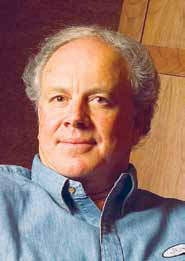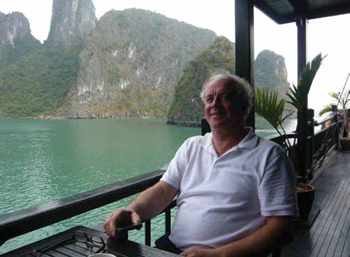Roll With the Technology

Hagai Gefen Grows His Business by Adapting and Evolving
Quick Bio
NAME: Hagai Gefen
TITLE: President and CEO
COMPANY: Gefen
SCN: When did you first discover your interest in electronics?
Hagai Gefen: As a 12-year-old in charge of the music album collections at my school, I was responsible for selecting the music for Friday night dance parties. I also set up the amplifier and speakers, DJ style, and learned a great deal on how to operate the equipment.
SCN: How did your education and early career lead you to your field of specialty?
HG: I was working half a year and studying half a year while going to Northeastern University in Boston. It was a co-op program and the company I worked for designed and built the very first non-linear editing system for video and audio. I was in charge of final testing, and I learned a great deal about video and audio using the knowledge of microprocessor programming and techniques. Since these systems used timecode for tracking time and location, I learned how to make synchronization of the audio elements that followed with the video edits—skills and knowledge that last forever.
A daily selection of the top stories for AV integrators, resellers and consultants. Sign up below.
SCN: When you founded Gefen in 1995, your computer peripheral extension products were designed for the post-production market. What was it that drove demand in the larger professional AV space?
HG: The most compelling reason we moved from post-production to the larger AV space was due to the evolution of digital video. When DVI emerged, it was widely accepted in the post-production market. It was really a game changer that preceded the development of HDMI, which would eventually take the entire market by storm. DVI was evolutionary because it was basically a higher resolution digital version of video that required more reliable methods of extension. It was unlike analog video in that the quality of the cable didn’t matter as much. With analog video, you could extend the signal a long way using a basic cable. That changed with digital video, which required a booster, or sender/receiver system to extend video at its highest resolutions. This led to the eventual development of Gefen’s entire connectivity line of solutions— all designed to handle digital video interfaces.

Hagai Gefen discovered an interest in electronics at the age of 12.
SCN: What changes in commercial AV integration have presented the greatest challenges in product development?
HG: Wireless high definition video extension presented some challenges in the beginning. Most of these have been solved, but I can remember testing a wireless laser-based HDMI extender back in 2005 that would break the signal over every vibration in the room. Those could be frustrating days because the market had such an obvious need for wireless video extension, but the technology wasn’t stable enough at that time. We’ve come a long way since then, and with the stabilization and organization of wireless protocols, we can expect to see even greater wireless solutions to come. I envision a day when cabling will be reserved for ultra high-end delivery, and the home market in particular will be completely wireless.
SCN: Looking ahead, what skills will be most critical to the success of AV integrators and consultants?
HG: You have to roll with the technology, of course, and be educated on how systems can be evolved over time. I think ongoing services and support of integrated systems are going to be much more valuable to the customer. Everybody can basically install a box, because most connectivity solutions that Gefen provides are totally plug and play in action. But specifying systems, planning for upgrades, offering support of previously installed systems, and basic ongoing customer service is what will set you apart.
Kirsten Nelson is the editor of SCN.
